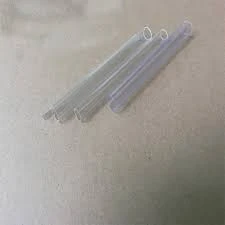Okt . 22, 2024 10:08 Back to list
High-Density Polyethylene Drainage Pipes Benefits and Applications for Effective Water Management
Understanding HDPE Drainage Pipes Benefits and Applications
High-Density Polyethylene (HDPE) drainage pipes have emerged as a popular choice for various drainage applications due to their robust nature and excellent performance characteristics. These pipes, made from high-density polyethylene resin, are designed to facilitate efficient water management in both residential and commercial settings.
One of the key advantages of HDPE drainage pipes is their durability. Unlike traditional materials such as concrete or metal, HDPE pipes are resistant to corrosion, rust, and chemical damage. This makes them ideal for applications where they may be exposed to harsh environmental conditions or chemicals. Their resilience ensures a long service life, often exceeding 50 years, which can significantly lower maintenance costs over time.
Understanding HDPE Drainage Pipes Benefits and Applications
Moreover, HDPE pipes are lightweight, making them easier to transport and install compared to heavier materials. This reduces labor costs as fewer workers are needed for installation, and the process can be completed more quickly. The joints of HDPE pipes can be welded together using a variety of techniques, providing a seamless, watertight system that minimizes the risk of leaks and enhances overall system efficiency.
hdpe drainage pipe

When it comes to flow efficiency, HDPE drainage pipes also stand out. Their smooth interior walls reduce frictional resistance, promoting optimal water flow. This feature is crucial in preventing blockages and ensuring a free flow of drainage water, which can be particularly beneficial for applications in agricultural fields, stormwater management systems, and municipal drainage projects.
In addition to functionality, sustainability is becoming an increasingly important factor in pipe material selection. HDPE is a recyclable material, which means that at the end of its lifespan, it can be repurposed into new products, reducing plastic waste and promoting a circular economy. Many regulatory bodies are now advocating for the use of sustainable materials in construction, making HDPE pipes an attractive option for environmentally-conscious projects.
The applications of HDPE drainage pipes are vast. They are commonly used in residential drainage systems, including French drains, yard drains, and residential stormwater management. In commercial and industrial settings, they are employed for wastewater management, landfill drainage, and water feature installations. Their versatility allows them to adapt to various drainage needs, making them a go-to solution for engineers and contractors alike.
In conclusion, HDPE drainage pipes represent a modern solution to traditional drainage challenges. Their durability, flexibility, lightweight nature, and sustainable attributes make them an essential choice for effective water management. As the demand for efficient and environmentally-friendly construction materials continues to grow, HDPE pipes are likely to play a pivotal role in shaping the future of drainage systems across the globe. Whether it’s in a new construction project or an upgrade to an existing system, HDPE drainage pipes offer a reliable and efficient option that meets the needs of today’s water management challenges.
-
High-Quality PVC Rigid Sheet (Glossy Surface) for Industrial Use
NewsJul.26,2025
-
High Quality PVC Rigid Sheet (Embossed Surface) for Industrial Use
NewsJul.25,2025
-
High Quality PVC Soft Sheet for Flexible Applications | Durable & Customizable
NewsJul.24,2025
-
High-Quality UPVC Water Supply Pipe for Durable Plumbing Solutions
NewsJul.23,2025
-
High-Quality PVC-M Water Supply Pipe for Reliable Plumbing Solutions
NewsJul.22,2025
-
High-Quality PVC Transparent Pipe with Clear Visibility & Durability
NewsJul.22,2025

